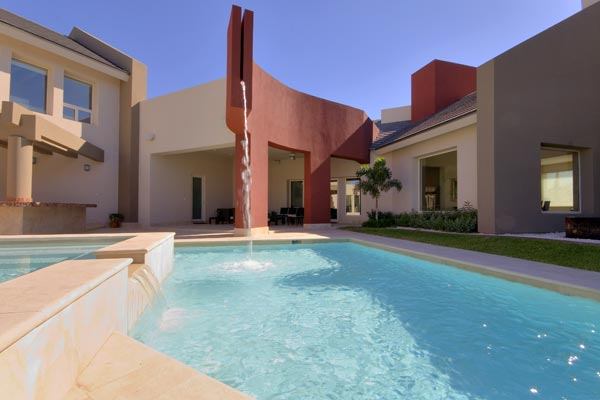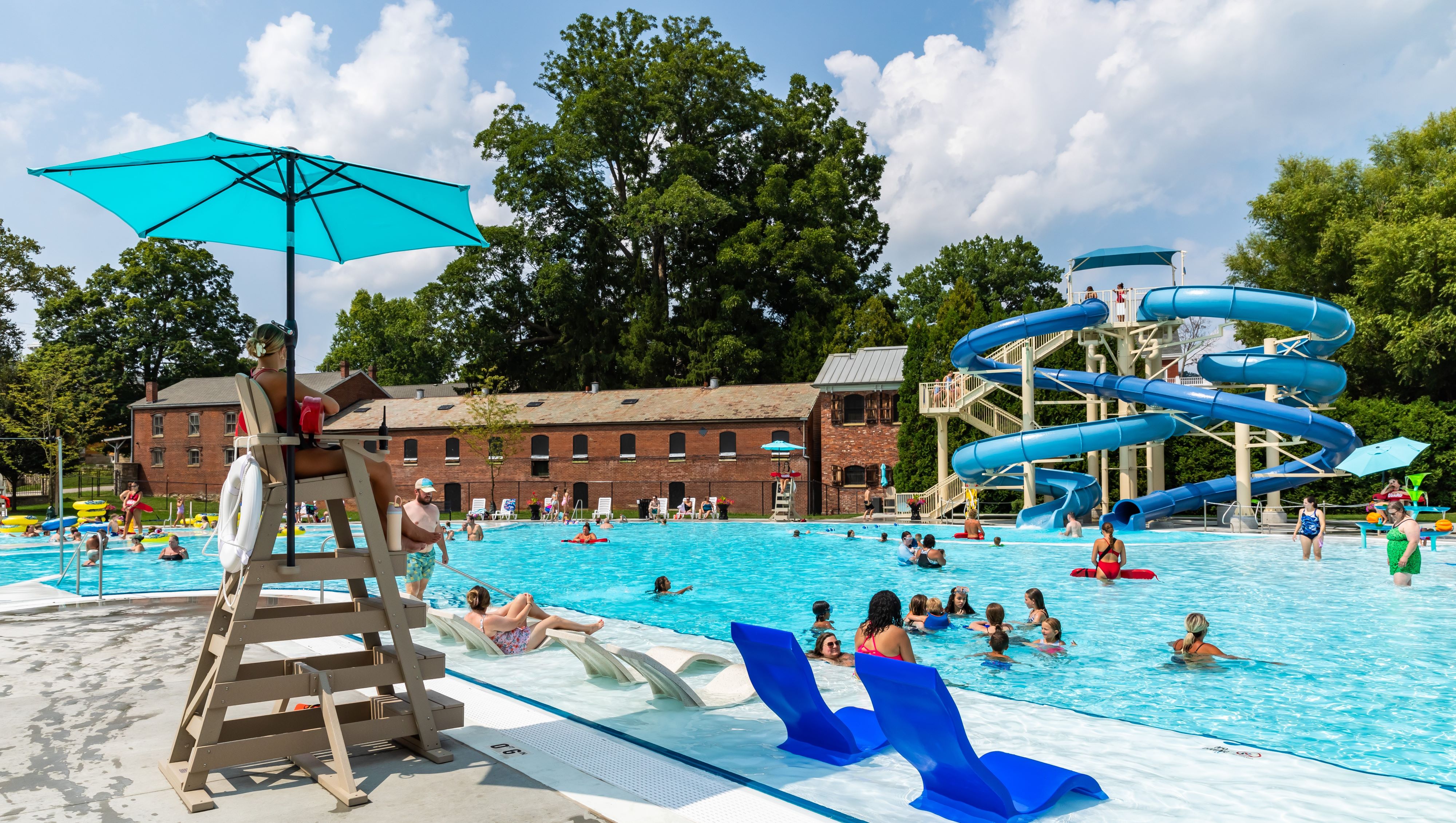For this unique project, Jeff Lokker was hired to renovate a nearly 100-year-old pool. The 1920s Spanish colonial home was influenced by Moorish architecture and includes dramatic design elements that reflect that history.
Iberian influence
The 1920s Spanish colonial home was influenced by Moorish architecture, so Lokker and his team erected a fountain to mirror those design elements. He also took a common motif in Islamic art — an eight-pointed star — and applied it to the basin.
Instead of cutting into the pool shell, Lokker opted to remove some coping and build the basin at deck level, doweling it into the existing vessel. They created the new structure out of steel-reinforced block, with a reinforced-concrete foundation to make construction as easy and non-intrusive as possible.
Through the front wall of the basin, Lokker placed 1-1/2-inch copper pipes. A brass nozzle feeds water into the basin from above. “I was looking for a unique piece, and it had to be strong enough to stand out against the tile,” he says. “I couldn’t put a lion’s head up there. I really wanted to feel like it was an old fountain, like it was of the period.”
Patio appeal
The site’s original clay paver deck was not up to standard, so it was replaced with a man-made product made to look like satillo tile, but last longer.
Around the pool perimeter, Lokker and his crews inset small Malibu Revival tiles for authenticity. These tiles are reproductions or inspired by pieces from that period, when many of the posh homes were built in the Spanish Colonial style.
“I used those very sparingly,” Lokker says, “because I knew that my tiles in the waterline were going to be strong with black, red and tan.”
Revival oasis
The structure of the poured-concrete pool was actually in good shape. There was no cracking, even though it was reinforced with a steel mesh rather than rebar. Lokker decided to leave well enough alone. This included the pre-cast coping.
“Because it was original and of the period and had a great look to it, I didn’t want to touch that,” Lokker says. “I wanted to preserve as much of the pool as possible.”
He mimicked the coping on the spa, which had been added during a 1970s renovation.
Bold move
For the tile line, Lokker chose a bold red, black and gold arabesque patttern. It doesn’t have a straight line at the bottom like a standard tile, but rather interlocks with the pebble interior. Each tile was individually fired and installed. The tile-setters’ job was matched only by the pebble applicators, who had to bring the material up to and around the intricate forms.
On the pool floor, Lokker added the outline of an eight-sided star inspired by the forms on the fountain. “It’s very delicate,” he says. “I didn’t want to take too much away from the fountain.”





